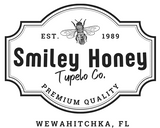How To Tell If Honey Is Pure?
Honey is valued for its distinctive sweetness and health benefits. However, commercial honey production has led to increased adulteration, where pure honey is mixed with sweeteners and syrups that diminish its quality.
This adulteration makes it difficult to identify truly pure honey. Beyond taste, pure honey contains natural enzymes, antioxidants, and beneficial compounds that contribute to its health properties, qualities often reduced in adulterated products.
Fortunately, various methods exist to test honey purity, from simple kitchen techniques to sophisticated laboratory procedures. These methods help consumers make informed choices about the raw honey they purchase.
Simple Kitchen Tests You Can Try Today
Pure honey is treasured for its natural properties, but with increasing adulteration in the market, knowing how to verify what you're buying becomes essential. Recent studies have revealed alarming statistics about honey adulteration globally. According to a Scientific Reports 2018 study , honey ranks third among the most adulterated food products worldwide. The study found that 52% of Asian honey samples tested were adulterated, while European honey samples showed a lower but still significant adulteration rate.
1. The Water Immersion Test for Honey Quality
This straightforward test requires only a glass of water and a teaspoon of honey. Simply add the honey to the water and observe its behavior. Pure honey is denser than water and will settle at the bottom of the glass without readily dissolving. It may form a lump or settle down distinctly. In contrast, adulterated honey typically dissolves quickly or creates a cloudy appearance in the water due to additives that alter its natural density. This happens because impure honey often contains added moisture or syrups that change how it interacts with water.
2. The Absorbency Paper Test for Authenticity
The paper test is quick and requires minimal equipment. Place a few drops of honey on absorbent paper or a paper towel and observe what happens. Pure honey will remain intact on the surface without being absorbed, though it might make the paper slightly sticky. Impure honey, however, gets absorbed quickly into the paper, leaving a noticeable wet mark. This occurs because adulterated honey often contains additional water or other substances that alter its natural consistency.
3. The Thumb Test For Identifying Purity
For this simple tactile test, place a small drop of honey on your thumb. Pure honey should feel distinctly sticky and thick, maintaining its form and resisting absorption into your skin. If the honey feels thin, watery, or gets absorbed quickly into your skin, it likely contains additives or excessive moisture that compromise its purity.
4. The Heat Response Test For Authenticity
Heat a small amount of honey in a microwave-safe container for about 30 seconds or in a saucepan on low heat. Pure honey will caramelize slightly and release a pleasant caramel-like aroma. Impure honey, on the other hand, may froth, bubble excessively, or burn differently due to added moisture or other substances that alter its natural composition.
5. The Flame Response Test For Purity
This test examines honey's flammability. Dip a cotton swab, tissue paper, or matchstick in honey and attempt to light it. Pure honey has low moisture content, making it flammable; the wick should ignite and burn steadily. If the honey contains added water or other moisture-increasing adulterants, the wick will either not catch fire or will burn with difficulty.
6. The Natural Crystallization Assessment Method
Crystallization is a natural process in honey where glucose molecules separate from the solution and form crystals. Pure honey naturally crystallizes over time, though the rate varies depending on the type of honey and storage conditions. If your honey never crystallizes and remains in a liquid state indefinitely, it may have been excessively heated or processed during production, potentially indicating adulteration.
7. The Sensory Evaluation Approach
Use your senses to evaluate honey quality. Pure honey has a complex flavor profile with distinct floral, fruity, or woody notes depending on the nectar source. It should have a pleasant aroma reminiscent of the flowers or plants from which it was derived. Adulterated honey typically lacks this complexity, offering mostly sweetness without the nuanced layers of flavor that characterize pure honey.
For reliable assessment, use multiple tests rather than relying on a single method for more comprehensive insights into honey authenticity.
Notable Physical Traits of Authentic Honey
1. Thickness and Flow Rate of Quality Honey
Pure honey flows slowly and consistently when poured. This natural thickness comes from its composition of various sugars, minimal water, and bee enzymes. When you tilt a jar of pure honey, it should move gradually rather than rushing. Unusually thin consistency often suggests potential adulteration, though some legitimate honey varieties naturally flow more easily than others.
2. Visual Appearance and Clarity Indicators
Pure honey typically has a certain cloudiness rather than perfect transparency due to pollen particles and beeswax microparticles. Colors range from nearly clear to deep amber, depending on the floral source.
Indicators that warrant further testing include:
Honey that appears unnaturally shiny
Perfect clarity without any cloudiness
Unusual separation of layers
Inconsistent color throughout the jar
3. Aroma Profile of Unadulterated Honey
Pure honey has a distinctive aroma reflecting its floral origins. This natural fragrance includes subtle flowery notes with characteristic sweetness. Adulterated products often lack this complexity, smelling primarily of plain sugar or having a manufactured sweetness without natural depth.
Common Quality Checks in Professional Laboratories
Professional laboratories utilize standardized procedures to verify honey quality beyond basic purity assessment.
1. Moisture Content and Water Activity Analysis
Laboratories measure precise moisture percentage using refractometers. Pure honey typically contains less water than impure honey. Higher levels indicate potential dilution or improper harvesting. Water activity testing measures available water molecules that affect preservation and stability.
2. Sugar Profile and Composition Assessment
Pure honey primarily contains fructose and glucose, with their combined content typically around 60-70% of the total composition. According to research published in PMC, the fructose content of honey varies from 21 to 43%, while the glucose content ranges between similar values. The fructose-to-glucose ratio typically falls between 0.4 and 1.6, though it can be higher in certain varieties.
Key measurements include:
Total reducing sugar content
Fructose to glucose ratio
Sucrose percentage
These parameters help identify adulteration with syrups that alter natural honey sugar profiles.
3. Hydroxymethylfurfural Determination Tests
Hydroxymethylfurfural (HMF) serves as an important quality indicator for honey. This organic compound forms naturally during storage through the dehydration of certain sugars, but it accelerates significantly with heating or aging.
Fresh honey typically contains very low HMF levels-generally less than 15 mg/kg. According to Fera Science, "Fresh honey generally contains less than 15mg/kg HMF, but over 40 mg/kg is used to guarantee the honey has not undergone excessive heating during processing".
International standards have established clear limits for HMF content:
The European Union Directive (110/2001) and Codex Alimentarius standards limit HMF to 40 mg/kg for honey produced under European conditions
A higher limit of 80 mg/kg is allowed for honey from tropical regions, where higher ambient temperatures naturally accelerate HMF formation
HMF testing is commonly performed using high-performance liquid chromatography with UV detection (HPLC-UV), with detection limits as low as 1 mg/kg. This method provides accurate quantification of HMF levels to verify compliance with regulatory standards.
Unusually high HMF indicates excessive heat treatment (often used to prevent crystallization), prolonged storage, or potential adulteration.
Final Thoughts
The journey to identifying pure honey involves multiple approaches, from simple kitchen tests to advanced laboratory analysis. While perfect verification might require scientific equipment, consumers can still make educated assessments.
Supporting reputable local beekeepers provides one of the most reliable ways to obtain pure honey. Local producers typically handle smaller honey volumes with more careful quality control and direct oversight of the extraction process.
At Smiley Honey, each batch undergoes rigorous purity testing before reaching your table. Our beekeepers maintain careful oversight throughout the harvesting process, ensuring exceptional quality in every jar. We source only from trusted apiaries committed to sustainable beekeeping practices and natural honey production methods.
Frequently Asked Questions
Can pure honey ever spoil or go bad?
Pure honey doesn't spoil when stored properly due to its low moisture content and natural antimicrobial properties. It may naturally crystallize over time, but this doesn't indicate spoilage. However, if honey develops a fermented smell or bubbles, it may have absorbed excess moisture.
Does darker honey indicate higher purity than lighter varieties?
Honey color varies based on the floral source rather than the purity level. Darker honeys typically contain more minerals and antioxidants, while lighter varieties often have milder flavors. Both dark and light honey can be either pure or adulterated.
How does organic certification relate to honey purity?
Organic certification focuses on beekeeping practices, requiring bees to forage in pesticide-free areas and prohibiting antibiotic use. While organic honey follows strict production standards, organic certification alone doesn't guarantee freedom from adulteration. Additional purity testing is still valuable.


